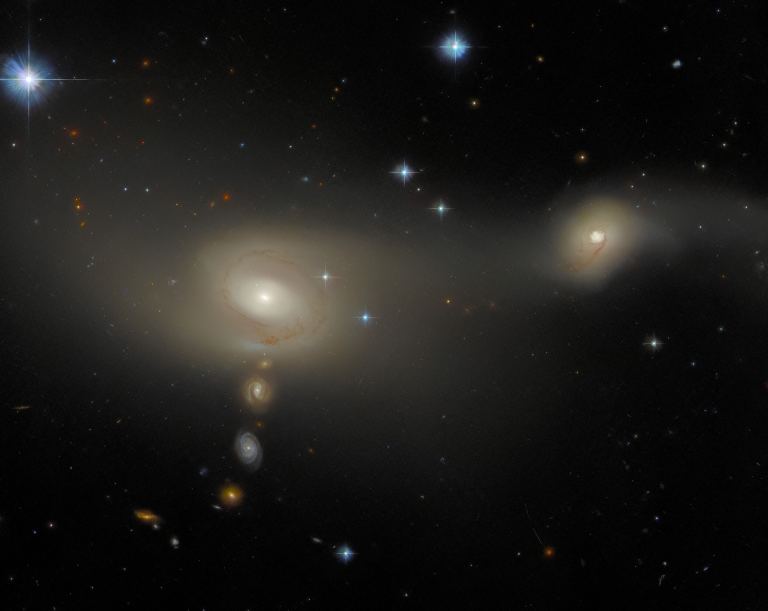Hubble Observes a Serendipitous Alignment of Galaxies
The latest image captured by the Hubble Space Telescope portrays what appears to be a series of smaller spiral galaxies cascading from a larger, more luminous galaxy. This intriguing assembly of galaxies is part of the Arp-Madore catalogue of peculiar galaxies, recognized for its distinctive features.
The prominent pair of galaxies, constituting an interacting system known as Arp-Madore 2105-332, is positioned approximately 200 million light-years away. It’s important to note that the smaller galaxies forming the apparent “falling line” are not physically associated with Arp-Madore 2105-332; they are located farther away. The Hubble telescope fortuitously captured this striking coincidence, creating the illusion that the background galaxies are streaming out from the larger galaxy on the left.
The detailed and clear depiction of all the galaxies in this image is made possible by the exceptional and enduring capabilities of Hubble’s instruments. The two substantial and luminous galaxies within Arp-Madore 2105-332 are classified as emission-line galaxies. This designation indicates that, when examined with spectrometers, their spectra exhibit distinctive bright peaks known as emission lines.

Astronomers leverage these emission lines to glean insights into various aspects of a galaxy, such as its type, composition, gas density and temperature, star formation rate, and the potential mass of its central black hole. An abundance of emission lines in a galaxy’s spectrum suggests active star formation and energetic newborn stars. Conversely, a preponderance of absorption lines indicates a depletion of star-forming material and an older stellar population. The two emission-line galaxies depicted in this image are characterized by high energy levels and serve as active sites for star formation.
The larger galaxy on the left is individually identified as 2MASX J21080752-3314337, while the galaxy on the right is named 2MASX J21080362-3313196. Despite their less-than-memorable names, these galaxies provide valuable astronomical information, serving as coordinates in the right ascension and declination system widely used by astronomers for locating celestial objects.
Do not forget to share your opinion with us to provide you with the best posts !



0 Comments